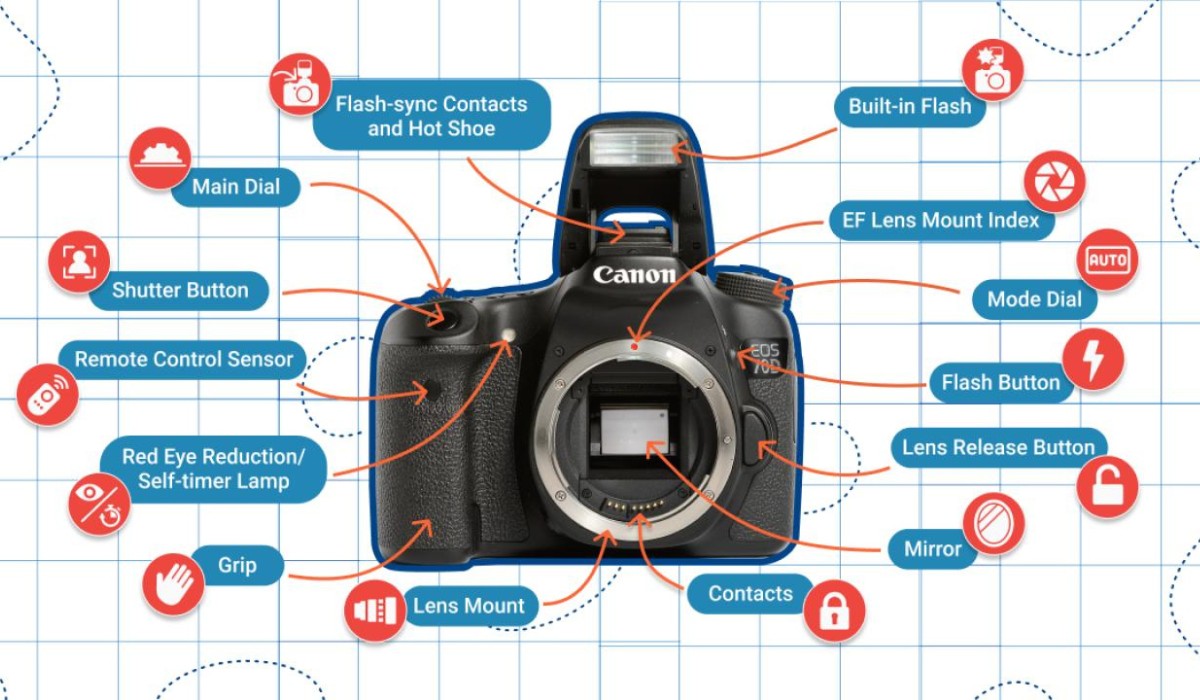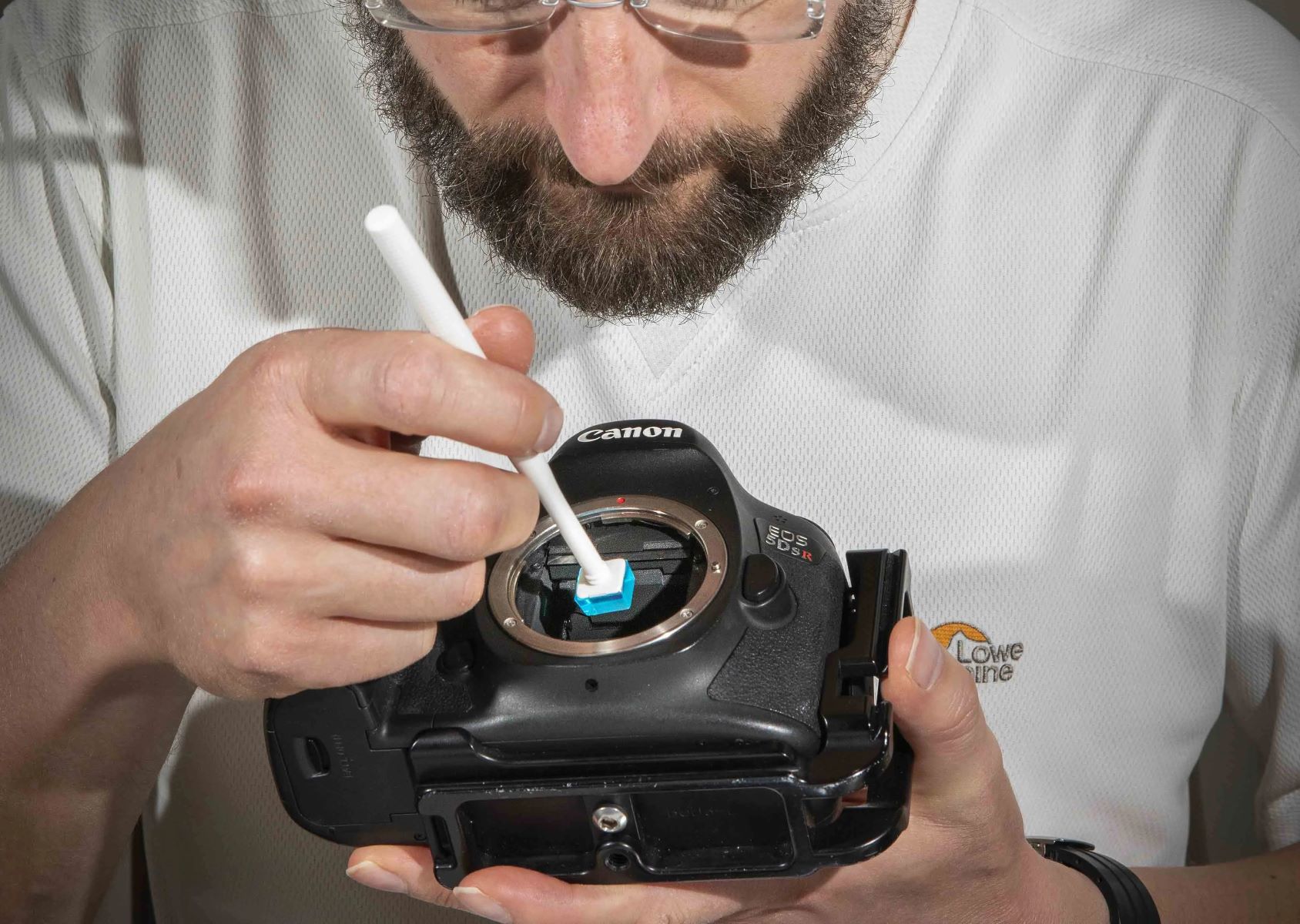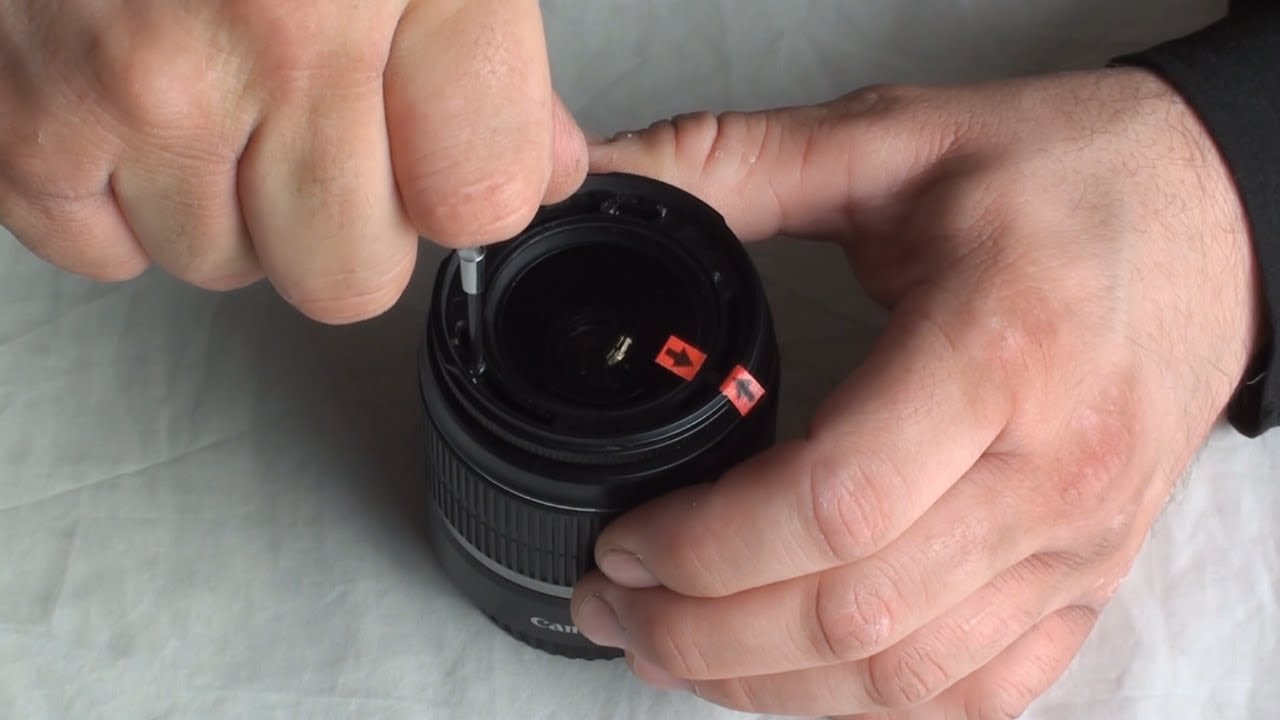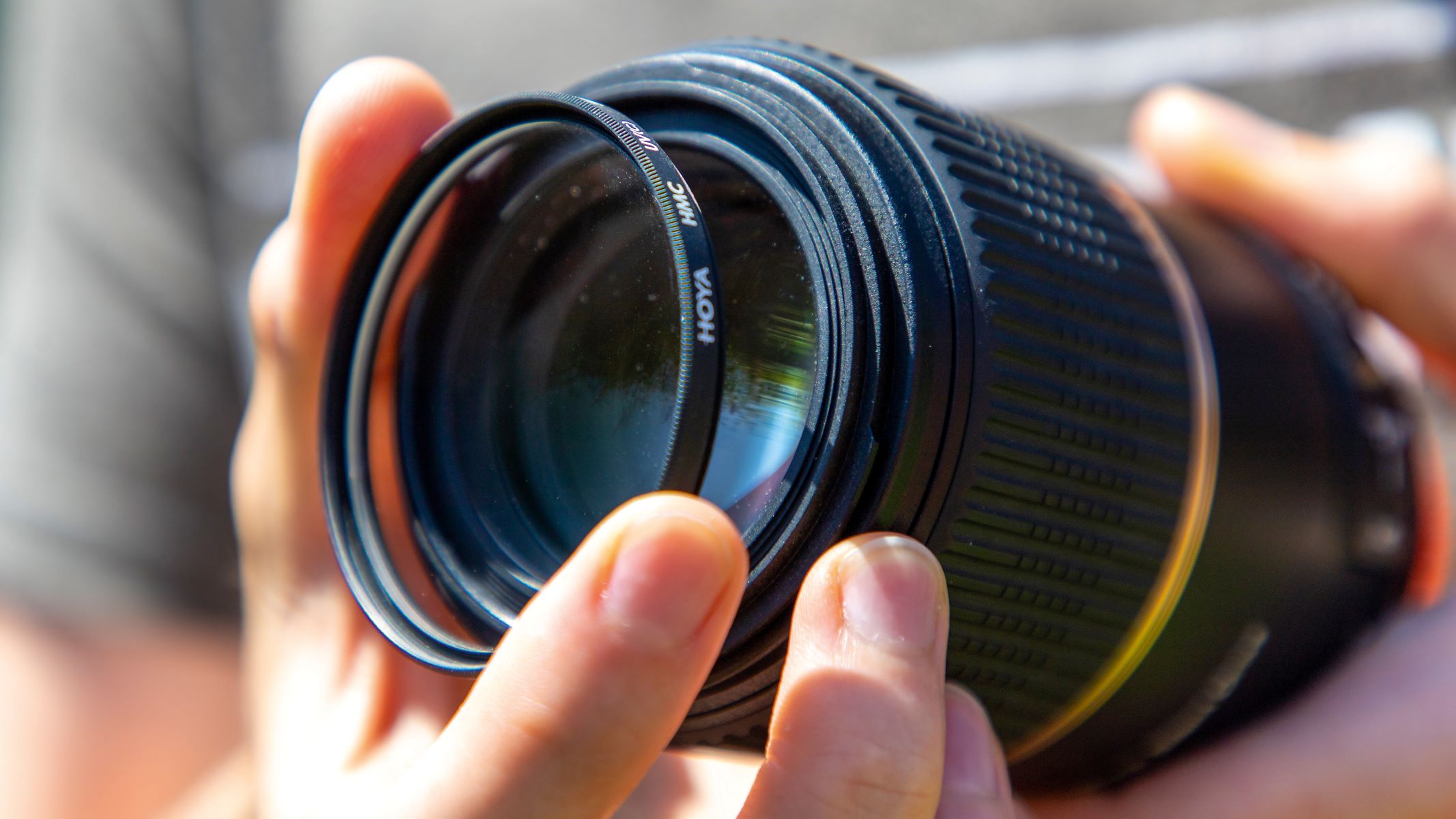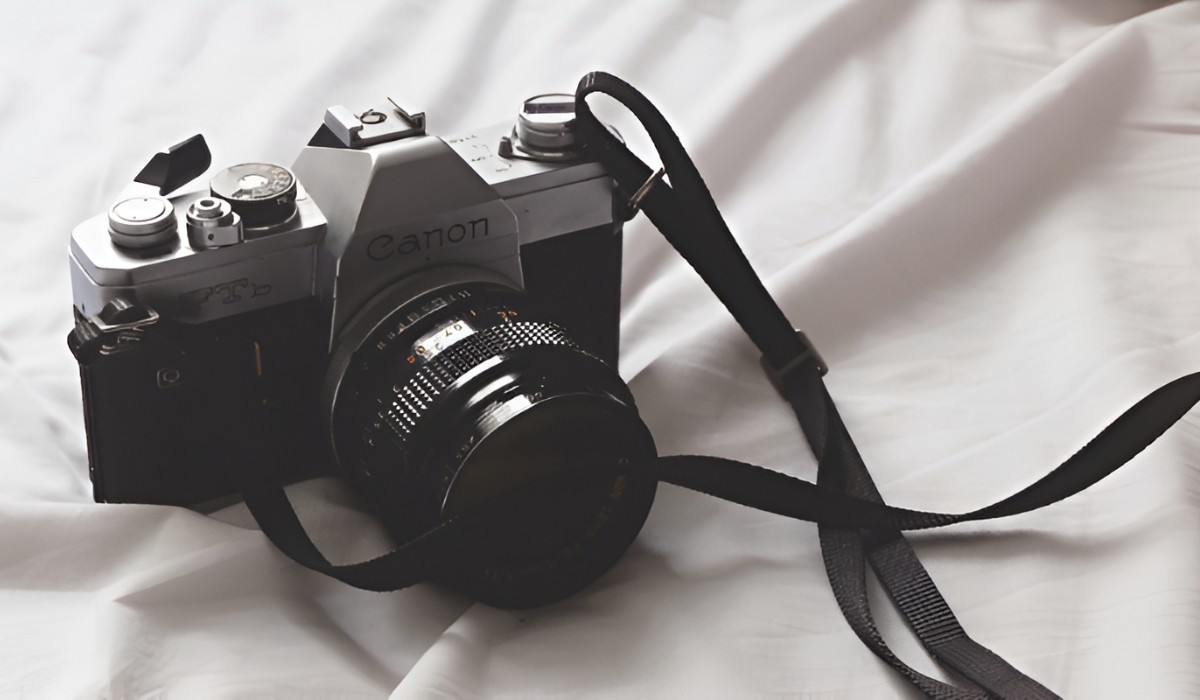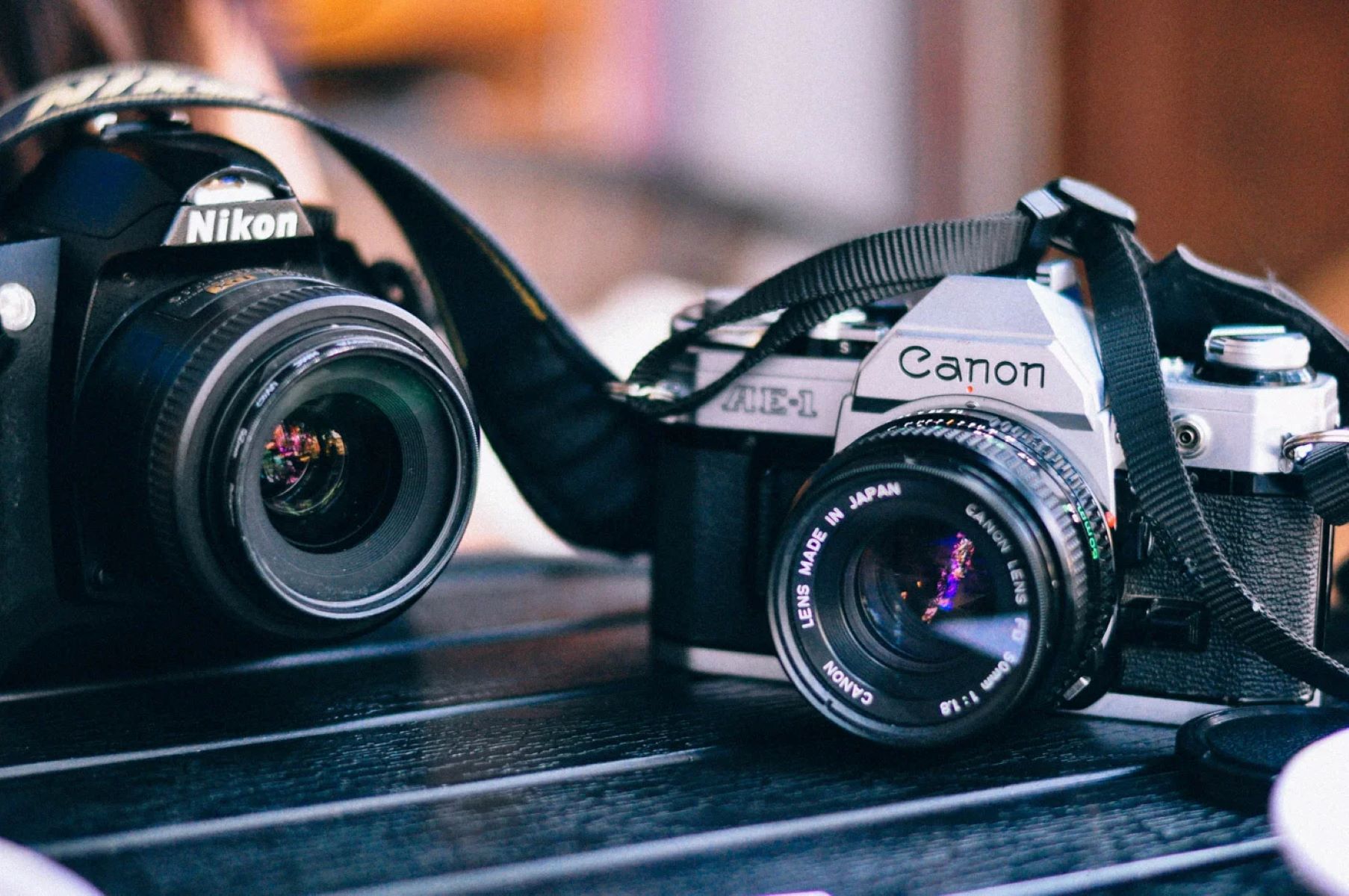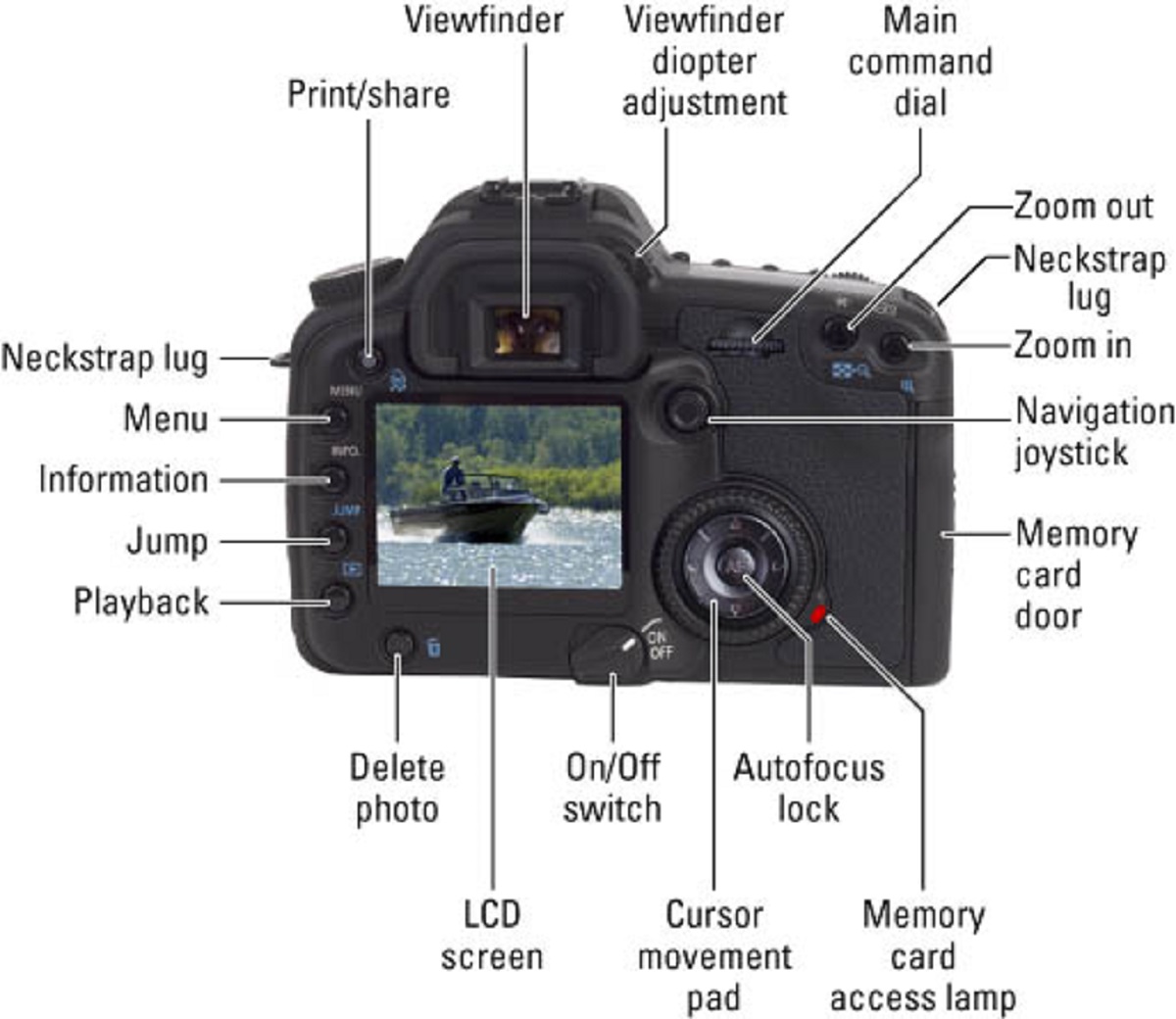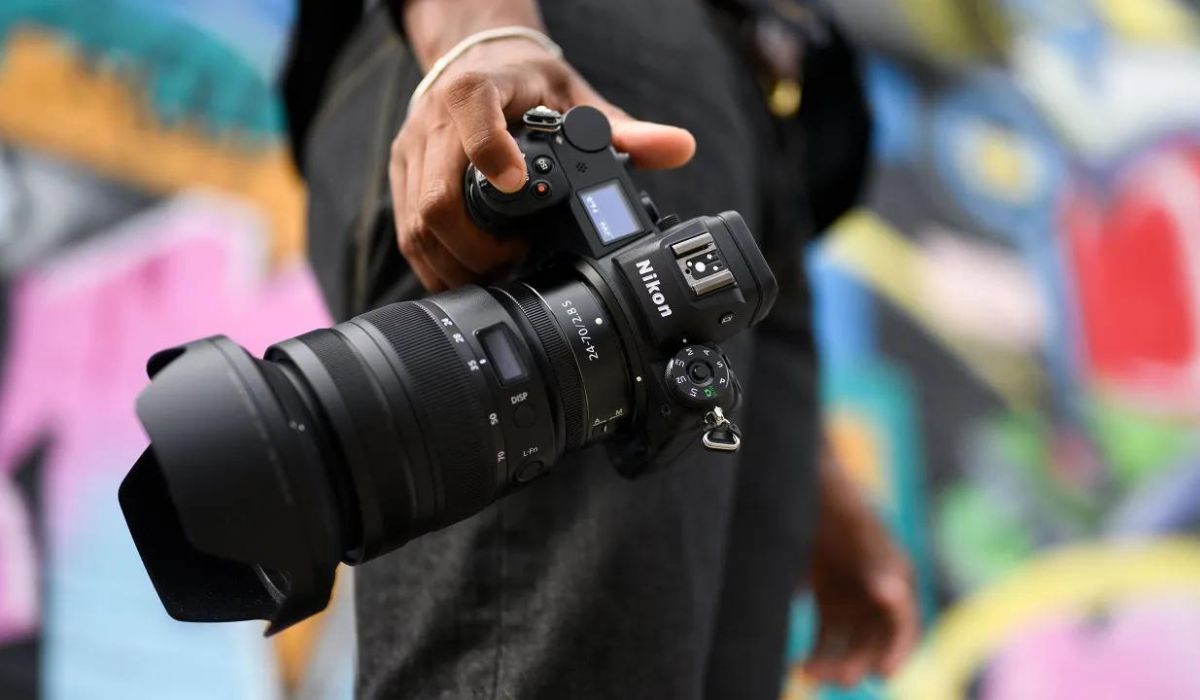Introduction
Welcome to the fascinating world of digital single-lens reflex (DSLR) cameras, where cutting-edge technology meets artistic expression. These sophisticated devices have revolutionized the art of photography, offering unparalleled versatility, control, and image quality. In this comprehensive guide, we will delve into the intricate components that make up a DSLR camera, shedding light on the essential features that empower photographers to capture breathtaking moments with precision and creativity.
From the intricate lens system to the powerful image sensor, each component plays a pivotal role in shaping the final image. Understanding the inner workings of a DSLR camera not only enhances your technical proficiency but also fuels your creative vision, enabling you to harness the full potential of this remarkable tool.
Whether you are a seasoned professional or an enthusiastic novice, embarking on a journey to explore the components of a DSLR camera will deepen your appreciation for the art and science of photography. So, let’s embark on this enlightening expedition through the heart of a DSLR camera, unraveling its ingenious components and unveiling the magic behind every captivating image.
Lens
The lens is the eye of the DSLR camera, dictating the clarity, perspective, and depth of the captured images. It comprises a complex arrangement of glass elements meticulously engineered to focus light onto the camera’s image sensor. The versatility of interchangeable lenses empowers photographers to adapt to diverse shooting scenarios, from expansive landscapes to intimate portraits, with unparalleled precision and creativity.
Key components of a lens include the focal length, aperture, and optical construction. The focal length determines the angle of view and magnification, ranging from wide-angle for expansive scenes to telephoto for distant subjects. The aperture, represented by an f-stop value, regulates the amount of light entering the lens and contributes to depth of field control, enabling captivating bokeh effects in portraits and compelling foreground-background separation in various genres of photography.
Furthermore, the optical construction of a lens, comprising multiple glass elements arranged in specific configurations, influences image sharpness, distortion, and aberrations. Advanced lens coatings mitigate flare and ghosting, ensuring pristine image quality even in challenging lighting conditions.
Moreover, specialized lenses, such as macro, fisheye, and tilt-shift lenses, expand the creative horizons of photographers, allowing them to explore macroscopic details, achieve unique visual distortions, and manipulate perspective with unparalleled ingenuity.
Understanding the intricacies of different lenses equips photographers with the knowledge to select the most suitable optics for each photographic endeavor, harnessing the full potential of the DSLR camera to encapsulate their artistic vision with unparalleled clarity and impact.
Shutter
The shutter mechanism in a DSLR camera is a marvel of precision engineering, serving as the gateway to capturing fleeting moments in time. Comprising a combination of mechanical and electronic components, the shutter controls the duration of light exposure onto the image sensor, determining the sharpness of moving subjects, creating dramatic motion blur, and enabling the seamless execution of long exposures for astrophotography and nightscapes.
Two primary shutter types exist in DSLR cameras: focal-plane shutters and leaf shutters. Focal-plane shutters, positioned in front of the image sensor, consist of two curtains that slide across the sensor plane at precise speeds, regulating the exposure duration. This design enables high-speed sync capabilities, allowing photographers to use flash at shutter speeds exceeding the camera’s maximum sync speed, ideal for outdoor portraits and action photography.
On the other hand, leaf shutters, integrated within the lens assembly, offer whisper-quiet operation and exceptional durability, making them well-suited for discrete and high-speed photography. Leaf shutters also facilitate synchronization with studio strobes, providing consistent and flicker-free illumination for professional studio setups.
Moreover, the shutter mechanism influences the camera’s maximum and minimum shutter speeds, crucial for freezing fast-paced action or capturing the serene flow of waterfalls and rivers. Understanding the interplay between shutter speed, aperture, and ISO sensitivity empowers photographers to master the art of exposure, infusing their images with dynamic energy or tranquil serenity, in harmony with their creative vision.
Furthermore, the durability and reliability of the shutter mechanism are paramount, ensuring consistent performance across countless shutter actuations. Manufacturers subject their shutters to rigorous testing to guarantee longevity and precision, instilling confidence in photographers to push the boundaries of their craft without limitations.
In essence, the shutter mechanism epitomizes the synergy of mechanical ingenuity and digital precision, bestowing photographers with the power to freeze time, unveil the poetry of motion, and craft visually compelling narratives that transcend the constraints of reality.
Image Sensor
The image sensor serves as the digital canvas within a DSLR camera, where light is transformed into vibrant pixels, capturing the essence of a scene with astonishing fidelity and nuance. Comprising millions of light-sensitive photodiodes, the image sensor, often in the form of a complementary metal-oxide-semiconductor (CMOS) or a charge-coupled device (CCD), plays a pivotal role in shaping the resolution, dynamic range, and low-light performance of the captured images.
The resolution of the image sensor, measured in megapixels, determines the level of detail and clarity in the final photographs. Higher megapixel counts enable expansive prints and intricate cropping without compromising image quality, empowering photographers to preserve the minutest details in their compositions with breathtaking precision.
Furthermore, the dynamic range of the image sensor influences its ability to capture a wide spectrum of tones, from deep shadows to luminous highlights, enriching the visual narrative with depth and dimension. Enhanced dynamic range facilitates the preservation of subtle gradations and textures, vital for conveying the mood and atmosphere of a scene with authenticity and impact.
Low-light performance, a hallmark of modern DSLR cameras, is significantly influenced by the image sensor’s sensitivity and noise reduction capabilities. Advanced sensor technologies, coupled with sophisticated image processing algorithms, empower photographers to push the boundaries of nocturnal exploration, capturing evocative nightscapes and celestial marvels with remarkable clarity and minimal noise.
Moreover, the size of the image sensor, commonly categorized as full-frame, APS-C, or micro four-thirds, dictates the field of view and depth of field characteristics of the captured images. Each sensor format offers distinct advantages, catering to diverse photographic styles and preferences, from expansive landscapes to intimate portraits, with unparalleled flexibility and creative potential.
In essence, the image sensor stands as the quintessential conduit between light and digital imagery, harnessing cutting-edge technology to preserve the fleeting beauty of the world with uncompromising fidelity and emotive resonance.
Viewfinder
The viewfinder of a DSLR camera serves as the window to the world, offering photographers a direct, optical connection to the scene they intend to capture. Positioned atop the camera body, the viewfinder provides a real-time, through-the-lens (TTL) representation of the subject, enabling precise composition, focus, and exposure assessment without the influence of external factors such as screen glare or battery life.
Two primary types of viewfinders exist in DSLR cameras: optical and electronic. Optical viewfinders employ a complex system of mirrors and prisms to reflect the image from the lens onto the photographer’s eye, delivering a natural, unadulterated view of the scene. This design ensures instantaneous feedback and seamless continuity between the photographer’s vision and the captured image, fostering an intuitive and immersive shooting experience.
On the other hand, electronic viewfinders (EVFs) utilize miniature displays to present a digital rendition of the scene, offering overlays of exposure data, focus peaking, and real-time adjustments. EVFs excel in providing a preview of the final image, incorporating visual simulations of exposure settings and creative filters, empowering photographers to pre-visualize the outcome with unparalleled accuracy and creative control.
Furthermore, the viewfinder’s magnification and diopter adjustment capabilities cater to individual visual acuity, ensuring comfortable and precise framing for photographers with varying eyesight. Additionally, the presence of grid lines and customizable focus points within the viewfinder facilitates meticulous composition and alignment, empowering photographers to craft visually compelling narratives with precision and intent.
Moreover, the optical clarity and durability of the viewfinder optics are paramount, ensuring an unobstructed and pristine view of the scene in diverse environmental conditions. Anti-reflective coatings and ergonomic eyecups enhance the viewing experience, mitigating distractions and fatigue during prolonged shooting sessions, fostering a seamless connection between the photographer and their creative vision.
In essence, the viewfinder stands as the quintessential portal through which photographers immerse themselves in the visual tapestry of the world, transcending the confines of technology to forge an intimate and unfiltered connection with their subjects.
LCD Screen
The LCD screen of a DSLR camera serves as a multifaceted interface, providing photographers with a comprehensive platform for image review, menu navigation, and real-time visual feedback. Positioned on the rear of the camera body, the LCD screen offers a vibrant and detailed representation of captured images, enabling meticulous scrutiny of composition, exposure, and focus accuracy.
Equipped with advanced display technologies, such as high-resolution panels and touch-sensitive interfaces, modern DSLR LCD screens deliver an immersive and intuitive user experience. The high pixel density and color accuracy of the screen facilitate precise image assessment, empowering photographers to evaluate intricate details and tonal nuances with unparalleled clarity and confidence.
Furthermore, the LCD screen serves as a gateway to the camera’s menu system, offering an array of customizable settings and creative controls at the photographer’s fingertips. Touch-enabled interfaces streamline menu navigation and setting adjustments, fostering a seamless and responsive interaction that enhances operational efficiency and creative spontaneity.
Real-time visual feedback during live view shooting and video recording further amplifies the versatility of the LCD screen, enabling precise framing, exposure monitoring, and focus confirmation. The articulating and tilting mechanisms of some DSLR screens expand shooting possibilities, facilitating low-angle compositions, high-angle perspectives, and self-portraiture with unprecedented flexibility and creative freedom.
Moreover, the durability and anti-reflective coatings of the LCD screen ensure reliable performance in diverse lighting conditions, from bright outdoor environments to dimly lit interiors. The screen’s resilience against scratches and smudges preserves its pristine visual output, guaranteeing uninterrupted image review and operational convenience throughout extensive photographic endeavors.
In essence, the LCD screen stands as a dynamic and indispensable interface, bridging the realms of image capture, review, and creative exploration, empowering photographers to engage with their visual narratives with precision, immediacy, and boundless creative potential.
Body
The body of a DSLR camera serves as the robust and ergonomic foundation that houses the intricate components, providing photographers with a versatile and reliable tool for capturing the world through their unique perspective. Crafted from durable and lightweight materials, the camera body embodies a harmonious fusion of functionality, durability, and intuitive design, catering to the diverse needs and preferences of photographers across genres and shooting environments.
Ergonomics play a pivotal role in the design of DSLR camera bodies, ensuring comfortable handling and intuitive access to essential controls and settings. The tactile sensation of the grip, the placement of buttons and dials, and the overall balance of the body contribute to a seamless and immersive shooting experience, empowering photographers to focus on their creative vision without impediments.
Furthermore, weather-sealing and dust-resistant construction fortify the camera body against environmental elements, enabling photographers to venture into challenging conditions with confidence, from rugged landscapes to inclement weather, without compromising operational reliability or longevity.
The modularity of the camera body, complemented by an extensive ecosystem of accessories and lenses, enhances its adaptability to diverse shooting scenarios. Compatibility with an array of lens mounts, flash systems, and external accessories amplifies the creative potential of the camera, fostering a dynamic and personalized approach to image-making.
Moreover, the integration of connectivity features, such as Wi-Fi, Bluetooth, and NFC, empowers photographers to seamlessly transfer and share their images, remotely control the camera, and synchronize their creative workflow with digital devices, expanding the horizons of creative collaboration and instant image dissemination.
In essence, the DSLR camera body stands as a testament to the marriage of form and function, embodying the spirit of innovation and resilience that empowers photographers to embark on a boundless exploration of visual storytelling, unhindered by limitations and propelled by the promise of endless creative discovery.
Memory Card Slot
The memory card slot in a DSLR camera serves as the gateway to preserving and transporting the captured moments, offering photographers a versatile and reliable means of storing their visual narratives with uncompromising security and convenience. Complementing the camera’s imaging prowess, the memory card slot accommodates various formats and capacities, catering to the diverse storage needs of photographers across genres and shooting scenarios.
Compatibility with popular memory card formats, such as Secure Digital (SD), CompactFlash (CF), and XQD/CFexpress, ensures seamless integration with a wide range of devices and storage solutions, facilitating effortless data transfer and archival management. The flexibility to select the most suitable memory card format empowers photographers to tailor their storage infrastructure to their specific workflow requirements, ensuring operational efficiency and data integrity.
High-capacity memory cards, coupled with advanced file systems and data transfer speeds, enable photographers to capture extended sequences, high-resolution images, and immersive video content without interruption, fostering uninterrupted creativity and expressive freedom. The reliability and durability of memory cards, fortified against environmental elements and physical stress, instill confidence in photographers to preserve their visual legacy across diverse shooting environments and demanding conditions.
Furthermore, the dual memory card slots featured in many DSLR cameras offer redundancy and flexibility, allowing simultaneous recording of images and videos to separate cards, automatic backup, and seamless overflow management. This dual-slot configuration enhances data security and operational continuity, mitigating the risk of data loss and facilitating streamlined post-capture workflows.
The integration of advanced features, such as UHS-II and V90 speed classes, empowers photographers to harness the full potential of high-performance memory cards, facilitating rapid data transfer, sustained write speeds, and efficient buffer clearing during burst shooting and video recording. This seamless synergy between the camera and memory card optimizes the operational fluidity and responsiveness of the camera, ensuring a seamless and responsive shooting experience.
In essence, the memory card slot stands as the indispensable conduit through which photographers safeguard their visual legacy, transcending the constraints of time and space to encapsulate the essence of their creative vision with uncompromising fidelity and security.
Battery
The battery of a DSLR camera stands as the lifeblood that fuels the creative endeavors of photographers, providing reliable and enduring power to sustain prolonged shooting sessions and immersive visual storytelling. Engineered for resilience and longevity, DSLR camera batteries embody a harmonious balance of capacity, durability, and compatibility, empowering photographers to venture into diverse environments and capture the world through their unique perspective without limitations.
The capacity of DSLR camera batteries, measured in milliampere-hours (mAh), dictates the endurance and operational longevity of the camera, influencing the number of shots, video recording duration, and overall shooting continuity. High-capacity batteries offer extended power reserves, ensuring uninterrupted creative exploration and the freedom to seize fleeting moments without the constraints of power limitations.
Moreover, the compatibility of DSLR batteries with an array of charging solutions, from dedicated chargers to versatile power banks, fosters operational flexibility and convenience, enabling photographers to replenish their power reserves on the go and maintain uninterrupted shooting momentum during extensive photographic endeavors.
The durability and resilience of DSLR camera batteries against environmental elements and operational stress fortify their reliability in diverse shooting scenarios, from inclement weather to rugged terrains. Weather-sealed battery compartments and robust construction ensure consistent performance and operational continuity, instilling confidence in photographers to push the boundaries of their creativity without compromise.
Furthermore, the integration of intelligent battery management systems within DSLR cameras optimizes power consumption, enhances battery life, and provides real-time feedback on remaining power reserves, empowering photographers to proactively manage their energy resources and adapt to prolonged shooting demands with precision and foresight.
In essence, the DSLR camera battery stands as the unwavering source of power that sustains the creative spirit of photographers, transcending the constraints of time and space to ignite the visual narrative with enduring vitality and boundless expressive potential.
Controls and Buttons
The controls and buttons of a DSLR camera constitute a tactile and intuitive interface, empowering photographers to orchestrate their creative vision with precision, immediacy, and expressive finesse. Positioned strategically across the camera body, these tactile elements offer seamless access to a myriad of settings, exposure adjustments, and operational controls, fostering an immersive and responsive shooting experience that transcends the confines of technology to amplify the photographer’s creative intent.
The tactile sensation and ergonomics of the controls and buttons play a pivotal role in shaping the shooting experience, ensuring comfortable and intuitive access to essential functions without impeding the photographer’s connection to their creative vision. The tactile feedback and responsive actuation of buttons and dials facilitate seamless adjustments, empowering photographers to engage with their subjects with precision and spontaneity.
Customizable buttons and programmable controls further amplify the versatility and personalization of the camera, enabling photographers to tailor the operational interface to their specific shooting preferences and creative workflow. This adaptability fosters a dynamic and personalized approach to image-making, empowering photographers to navigate diverse shooting scenarios with intuitive fluidity and expressive freedom.
Furthermore, the integration of dedicated controls for exposure settings, autofocus modes, and white balance adjustments streamlines operational efficiency, enabling photographers to fine-tune their creative parameters with immediacy and precision, without the need to navigate complex menu systems or interrupt their shooting flow.
Specialized buttons for functions such as exposure compensation, focus point selection, and image playback enhance the operational fluidity and responsiveness of the camera, fostering an immersive and intuitive shooting experience that empowers photographers to focus on their creative vision without impediments.
In essence, the controls and buttons of a DSLR camera stand as the tactile conduits through which photographers orchestrate their visual narratives with precision, immediacy, and expressive finesse, transcending the boundaries of technology to forge an intimate and unfiltered connection with their subjects.







